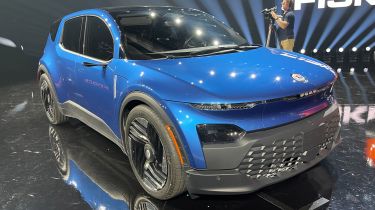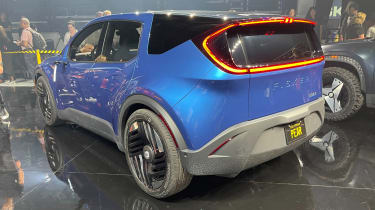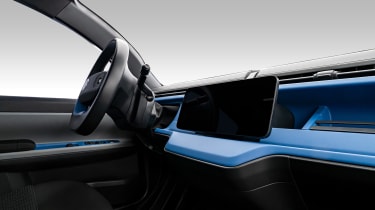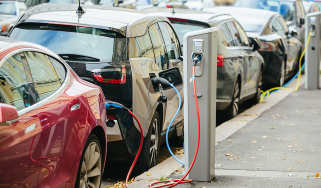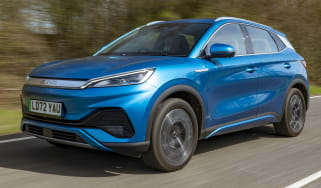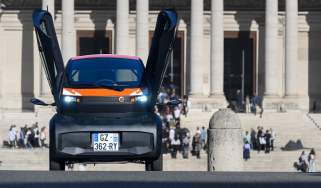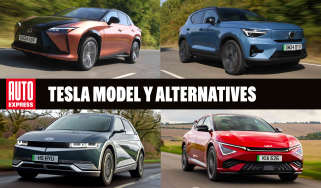New Fisker Pear: sub-£30,000 EV to offer up to 348 miles of range
The Fisker Pear will arrive in 2025 and sit below the larger Ocean SUV in the brand’s range
The Fisker Pear – the second all-electric SUV from the makers of the new Ocean – will offer a range of up to 348 miles, according to the California-based brand, which also confirmed a high-performance version called the Pear Extreme will be joining the lineup.
The Pear – which stands for ‘Personal Electric Automotive Revolution’ in case you’re wondering – is set to go on sale in 2025, with production and first deliveries beginning in July that year.
Fisker says that in North America the Pear will start from $29,000, before the US government’s financial incentives which will bring the price down to $22,400. Therefore, we expect the Pear to cost from under £30,000 when it arrives in the UK – around £5,000 less than the cheapest Ocean.
The Pear will be available with two battery sizes. The company hasn’t announced their exact capacities just yet, but estimates the larger battery will offer a range of up to 348 miles – roughly 60 miles further than a Kia Niro EV can cover on a single charge.
The smaller unit should allow for a range of around 198 miles, according to Fisker. Speaking to Auto Express about this particular version of the Pear, Fisker CEO Henrik Fisker said, “I think this will be a car that people have as their second or third EV and they might even have two electric cars. And if you have two electric cars, you don't need the second electric car with a super-long range.”
Current performance targets for the Pear have it delivering a 0-62mph time of at least 6.8 seconds, but customers will have a choice of rear-wheel or all-wheel drive, with the dual-motor versions likely to be a bit more brisk.
We expect the souped-up Pear Extreme will also use a dual-motor setup. No performance stats have been floated for the Pear Extreme yet, but the larger Ocean Extreme can hit 62mph in four seconds flat, so it’s unlikely to be much slower.
Fisker started the Pear programme by analysing how young people use their cars, expecting the Pear to be particularly popular with a new generation of car buyers. There are plenty of flexible storage solutions including a froot – a front boot - and a clever Houdini Trunk that frees up surprising extra space. “Everything in the dash is about storage, including rubber bands to store things,” said Fisker.
In keeping with Fisker’s promise that every new model will have at least four USPs, the Pear can be had with six seats set out in two rows of three – in the style of the old Fiat Multipla. However, the centre seat in the front row is part of a bench attached to the passenger seat, while the front seats fold flat into Lounge Mode to give more space to rear passengers. “You can even sleep in the car,” Fisker told us.
The Pear will be built in the US by another Fisker manufacturing partner, Foxconn – a company that’s more used to building iPhones for Apple rather than cars. Foxconn has been involved in the development process to ensure that costs are kept to a minimum and that all materials and the production are as sustainable as possible.
The Pear sits on an all-new platform called SLV1, standing for Simple, Light, Volume. The bodyshell uses an innovative Steel++ concept using 35 per cent fewer parts than a similar-sized rival vehicle making it easier and cheaper to assemble. That thinking extends to the armrests – there’s a single style used for each of the four doors.
It appears the Pear will take a leaf from the Tesla Model Y and Volvo EX30, using just a single central display for both driver information and infotainment. A 17.1-inch rotating touchscreen will be available as an optional extra, just like with the Ocean.
The Pear will be smaller than the Ocean SUV which launched earlier this year, but it’s still going to be 4,550mm long. That’s longer than the current Kia Sportage – a mid-size family SUV. It’ll also ride on 20-inch alloy wheels as standard, but 22-inch rims with high-performance tyres will be available, too.
The design of the Pear is simple, yet stylish with clean surfaces and a sporty stance. “We took inspiration from super-smooth glider planes,” said Fisker. “The rear window is totally flush and rolls around onto the roof of the car. The tail lamps also roll around the top of the rear screen to act as a spoiler too.
“The wraparound windscreen with a really low cowl gives a giant panoramic view when you’re driving in the city.”
The Pear also features a new supercomputer helping to power the vehicle called Fiskerblade. It features 6.2terraflops of computing power, which means lower power consumption and greater range, plus high-performance graphics on the car’s touchscreen. It’ll feature 5G connectivity to connect the Fisker to the cloud and with home and wearable smart devices. It’ll also continually analyse data within the car, potentially predicting failures before they occur. The Pear will also feature over-the-air updates, and – like Fisker’s other upcoming models, the Ronin and Alaska – can now be pre-ordered via the Fisker app.
Is Fisker's comeback off to a strong start? We drive the new Ocean to find out...
Find a car with the experts
